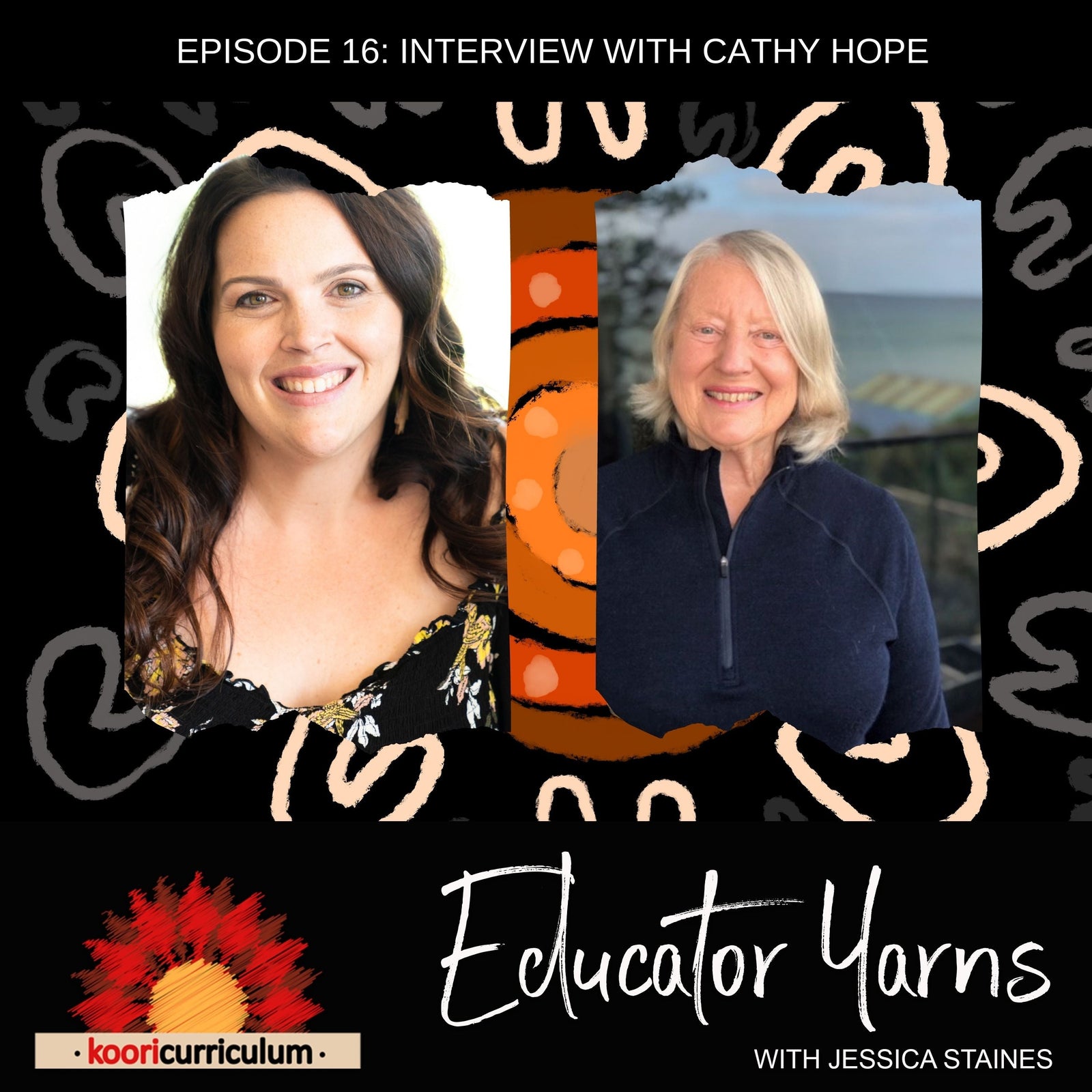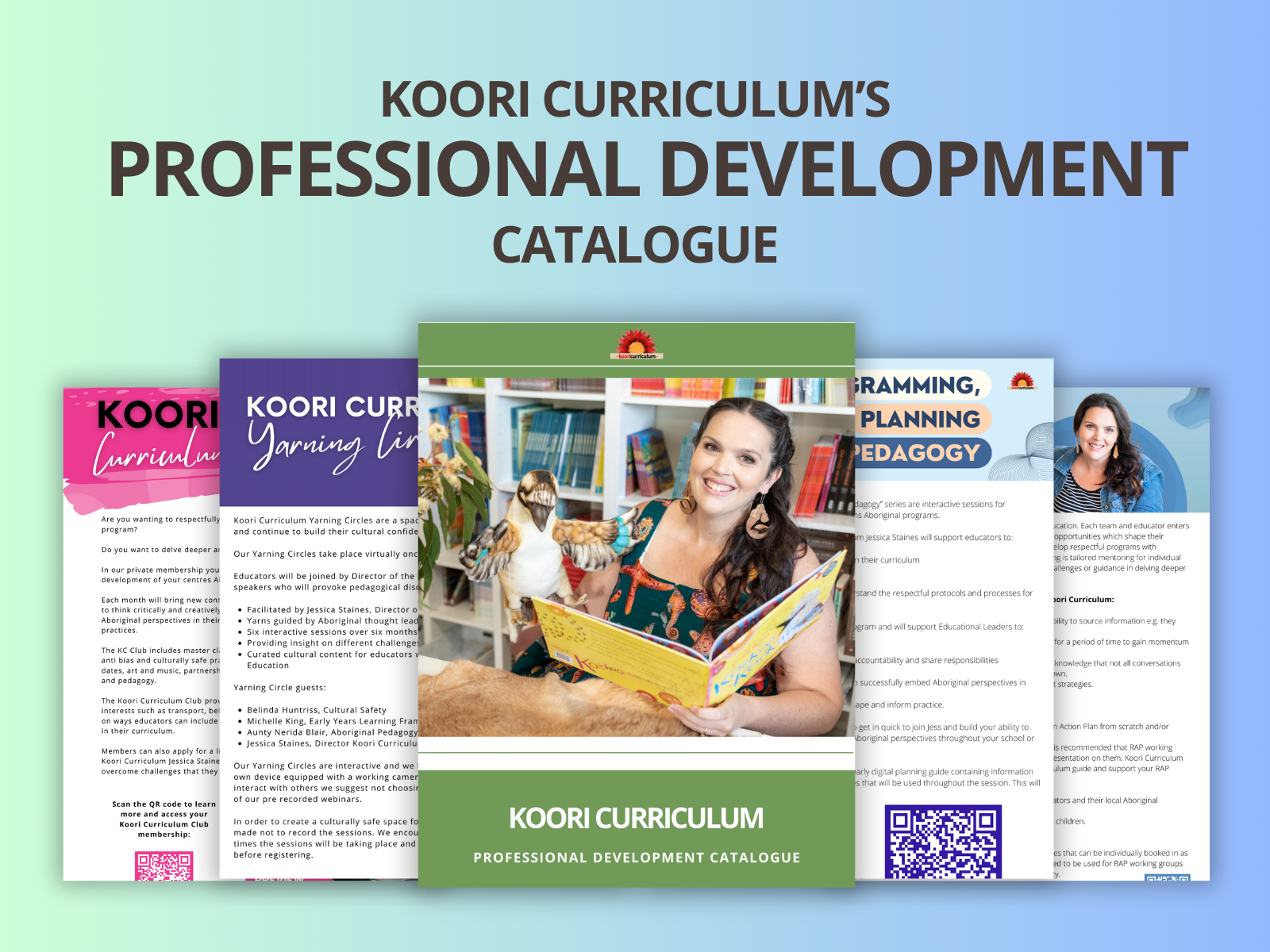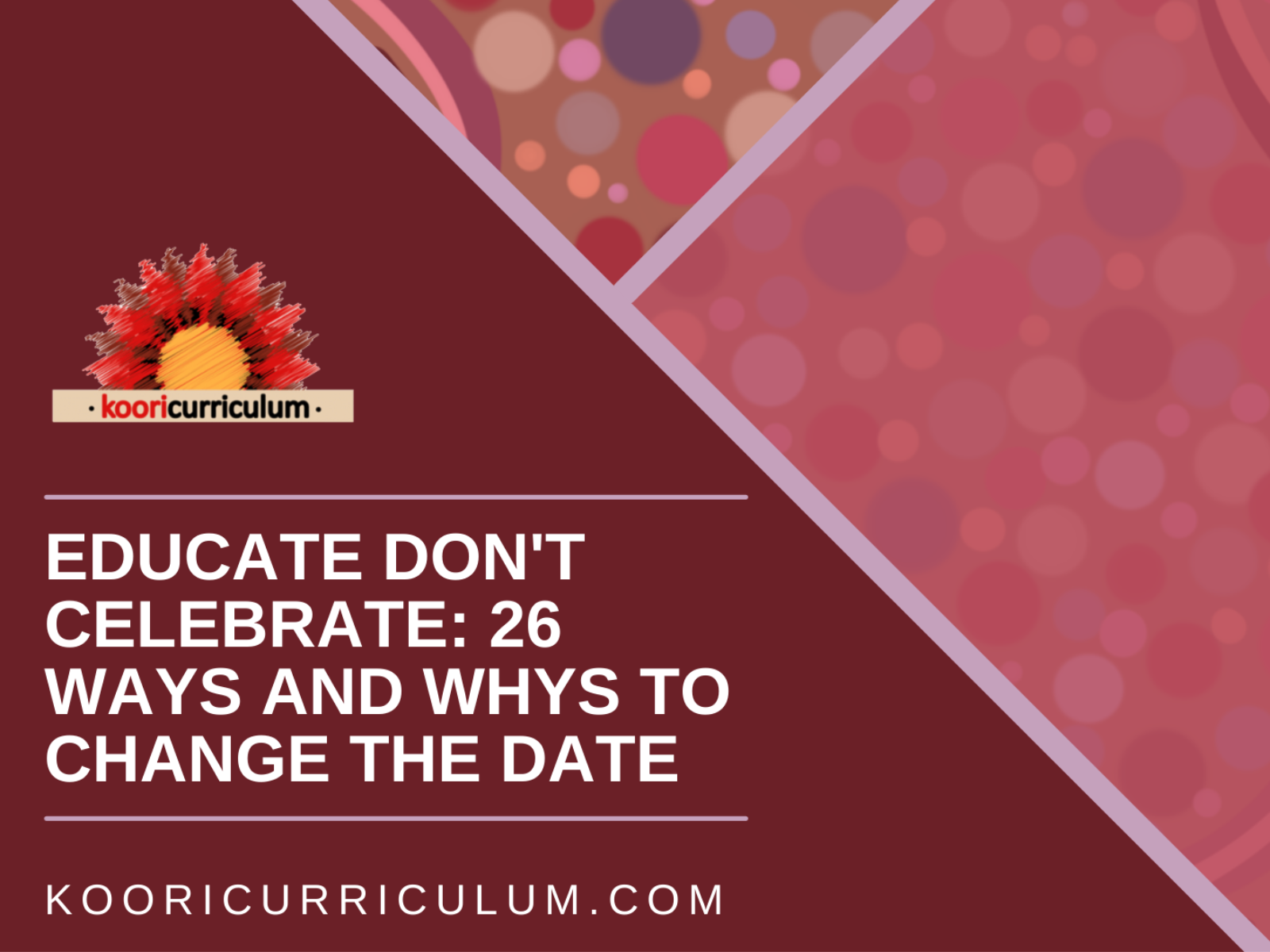
Educator Yarns Season 2 Episode 16: Interview with Cathy Hope
Today’s Guest on The Educator Yarns is Primary School Teacher and Author Cathy Hope to talk about her work and study into string figures and string games.
Drawing upon her wealth of knowledge and research , Cathy talks about the universal use of string figures in many first nations communities around the world but specifically how the use and similarities of the string figure designs are found and identified across many Aboriginal communities Australia wide. Celebrating how important these processes and designs were to not only play but build and design, Cathy talks about their significance and the role they play in identity and history.
SHOW NOTES
Cathy Hope:
String games are woven into each culture.
Jessica Staines:
Not just within different Aboriginal nations within Australia, but Indigenous cultures around the world. It's quite interesting.
Cathy Hope:
The string games and string figures are used as a very important form of illustration. An idea is passed on and it eventually connects a lot of us across the planet.
Speaker 3:
You're listening to the Koori Curriculum, Educator Yarns with Jessica Staines.
Jessica Staines:
I'd like to acknowledge the Darkinjung people, the traditional owners of the land on which I am recording this podcast. I pay my respects to their elders both past, present and emerging and pay my respects to all Aboriginal and Torres Strait Islander listeners.
Hi everyone. My name is Jessica Staines, Director of the Koori Curriculum. For those of you that aren't familiar with our podcast, season two is all about our new book Educator Yarns. We're meeting and interviewing with our educator contributors from right around Australia, who will be sharing little snippets of their piece. It will be a combination of stories about why embedding Aboriginal perspectives is so important, how to connect with local community, how to embed Aboriginal perspectives in our programme, how to work with anti-biassed approaches and so much more. So make sure you listen in and enjoy the episode. Bye for now.
We have a special guest on today's podcast, Cathy Hope, who is a dedicated primary teacher with over 50 years of experience of educating students in primary school. She is a valued mentor for teachers and has conducted various professional development throughout her career. Cathy's passion and worldwide research of children's traditional play led her to making a most significant contribution to the culture of play. At a time in the '80s, she was seconded into statewide education office for the Children's Museum in Victoria, with an exhibition on children's play called, You're It. During this time Cathy's outreach programme took the exhibition to 17 country and city schools involving 4,256 pupils.
As an educational author, her 30 plus published books and articles have been accepted enthusiastically into schools, Australia wide. In September 2004, Cathy was invited by Alice Springs School of the Air to give one of their first interactive lessons using satellite technology. Cathy interacted with children, talking about their play. Her session reached to remote area covering one sixth of Australia. In 2017, Cathy was a presenter at the International Play Association Conference in Istanbul Turkey. And we are so fortunate that she was able to contribute a piece to our new upcoming, Educator Yarns text on string figures and games, which of course is a traditional form of art and play for Aboriginal people and communities around Australia, and as well overseas, as where abouts to find out. So, we're really lucky to have Cathy, thanks so much for joining us.
Thanks so much for jumping on the podcast this morning. Really appreciate it.
Cathy Hope:
Well, It's my pleasure, Jessica.
Jessica Staines:
And we just read out a bit of a bio that you sent through, and you've had such a world of experience in play, not just in the Australian context, but internationally. And when you contributed a piece to our Educator Yarns book, it mainly focused on string figures and string games, which are seen here in Aboriginal Australia or in Aboriginal culture, but also overseas. So, I just thought to begin with, if you wouldn't mind sharing a little bit about your experience. How did you first find out about string games and figures? Where did that come from?
Cathy Hope:
Jessica, that came from my childhood when I played string games, string games were passed on to me by cousins and playmates and adults in my life. I lived in New Zealand as a child, and the Maori people in New Zealand have very strong string figure and string games culture, as do the Aboriginal people in Australia.
Jessica Staines:
And so, for those listeners that aren't aware of what we mean by string games and string figures, in the Aboriginal context, the way that I was taught, is that string games is sort of similar to like Cat's Cradle where you play it between your fingers, and it can be with one person or two people, it can also be laid down on the ground. Predominantly, it's made with your fingers, but in some instances it also involves teeth and elbows. If that be your experience, if you've got a better way of describing it for people that wouldn't know what we're meaning by string figures.
Cathy Hope:
Jessica, you're absolutely right. I think for people who don't know, they would recognise the Cat's Cradle string game that is played with two children, or maybe even the parachute string figure that features in many cultures. Especially English speaking cultures, but it's also very, very strong in the Indigenous culture peoples in Australia, the same string figure. And even in 1850, someone discovered or saw some people in Southern Australia in Victoria, using plants, making string from plants and playing Cat's Cradle exactly as we know the Cat's Cradle. But the parachute... Can I tell you about the parachute? I'd love to.
Jessica Staines:
Yeah, yes please.
Cathy Hope:
Well, the parachute... The first time I realised that the Indigenous people of Australia have the parachute design, an identical design to the one that many people know as parachute, was when I was in Central Australia. I just want to let you know about that because it's quite an amazing story. I found out, through my research, that the wiltja, the shelter used by the Anangu people in Uluru in Central Australia, the wiltja is their wind shelter. And they demonstrate what a wind shelter is by illustrating it by making the parachute, but holding it up the other way.
And a lady called Evon, showed that to me in 2006. And then once again, children demonstrated that to me at Uluru in 2017. And there are places far away to the North, South, East, West of Uluru where the same string figure is. Up in Kakadu, the Bininj people in Kakadu call it a Fish Spear. And also the Torres Strait Islanders have that same string figure, which they call the Fish Spear. In children in Perth in 1955, we're doing it and they were calling it Crow's Foot. And also the Navajo Indians make their shelter the same way. They show that string figure and they call it Hogan.
Jessica Staines:
Wow. So this sounds very similar to when you look at, stars and cosmology and constellations and so forth. A lot of the constellations that we have in Aboriginal culture, they have that, there's one that's like the warrior, right? And they have that in other First Nation communities around Australia and around the world. The name of it and the story is slightly different, but it's always to do with the warrior.
Cathy Hope:
Yes.
Jessica Staines:
So it's interesting how these traditional games and beliefs, the similarities that there are. Not just within different Aboriginal nations within Australia, but Indigenous cultures around the world. It's quite interesting.
Cathy Hope:
It is. And that is something that gradually I began to understand over the 40, 50 years that I've been interested in string games, by travelling right throughout Australia and then in other countries, I've gradually found out that the universal nature of these string games.
Jessica Staines:
And so, why would you say that string games are so important in today's context?
Cathy Hope:
Well, as we're speaking Jessica, millions of children, the world over, will be actually playing these string games. It's serious fun, making pictures with your fingers and string. And little children learned to play with each other before they play against each other, which is very important. It's a very important aspect of playing string games. It gives you a sense of belonging and positive bonding when you play a string game with a friend or with a grandparent, or a mother or father, or an elder.
And it's also suitable for individual play for children that are lonely, or just want to have time out. It's even good for children in hospital, sick children. It's therapeutic. It helps kids focus, and it's really, really good for sequential memory workout. And also gymnastics for fingers, where you develop fine motor control. But importantly, for all of us and for children, we're all custodians of those string games and we need to share them and pass them on. As teachers, and I'm very excited to know, Jessica, that you use string games in your teaching. We have a custodian role to pass these string games on that we know to children. And to help them understand the meaning of them.
Jessica Staines:
And I think that this idea as well, it's also great for cognitive development, because it's the recalling and retelling. And I know that in some of these regional communities that you've visited and worked in, that they have these string games. And some of them might be to recall and retell traditional stories through a form of transient art, whether it's collaborative or done by an individual child. But for me, my teaching, I don't look at traditional stories or try and recreate those exact same string figure patterns or games. But I look at the concept of string figures and string games, and instead, what I do is, I will recall and retell a familiar story that the children already know, that are in preschool. And I do it at a group time. So I might do, We're Going on a Bear Hunt, and I'll pass a piece of string from child to child as they add onto the story.
So I'll start the story, and then the next child will add to it, then the next child will add to it. And we'll make this pattern between us. And it's not always the exact same pattern and they don't always get the sequence of the story exactly right. But to me, this is the process of telling a story and the process of creating art that it's collaborative, that it's transient. And then we also do a little bit of Heuristic play, where they'll make different patterns within the shapes that they make with loose parts, like shells or stones and so forth. So that's some ways that I use it in my practise. I mainly use it as a form of pedagogy I guess.
Cathy Hope:
Yes. It's very interesting. When I have given lectures to people, to educators and interested people, I'm very proud of the fact that the string games and string figures are used as a very important form of illustration here in Australia. And have been for many, many thousands of years. Some of the stories illustrated, but with string by Indigenous peoples, may have about 50 different string figures as they're telling the story. And I just think that's amazing, really. There's an Emu story that an anthropologist, Charles Mountford discovered in 1938 in the Northern Flinders Ranges. And there were 45 string figures telling the Emu story. Which would relate of course to The Milky Way, where we see the Emu. And the Emu, of course, the making the nest, and laying the eggs, and then the father Emu looking after the eggs and et cetera. It's fascinating.
Jessica Staines:
Yeah, it really is. And I think it's just, for educators to know the possibilities of string games and to look at some examples of it. And that's why I'm so grateful for the beautiful pictures that you sent along with your article for our new book, Educator Yarns. But I just thought, while I've got you, Cathy, are you able to tell us what... I use wool when I do string games with children and with educators, but of course that's not a traditional form of string. What would the Aboriginal people have used, in Australia, for their string games? What fibres would they have made the string out of I guess?
Cathy Hope:
Well, up in the Northern part of Australia, in Kakadu and Arnhem Land, from my understanding, they used the fibre from the inner bark of some of the plants. Now, one of those plants is the kurrajong tree. And another one I believe is the fig tree. So they find the fibre and they wet it and rub it, so it's softer. And then, I think they rub it on their thighs to make the string. So string making with our Indigenous peoples in the past and now, and to the future, can be made from plants, from the fibre of plants. But I believe also... I've heard that the sinew from the legs of kangaroos makes very good string. And we know we've seen Central Australia, in 1995. I met some Warlpiri people from the Western Tanami desert, and they had a big bowl of black human hair string.
And they showed me some of their string games. I was very, very thrilled to know about that. They said they never waste human hair when it's being cut off, they save it and they roll it on the thigh to sort of join it together, or have a spindle, like a little handheld spindle, to spin the human hair into string. And then it's ready for making string games. And they very, very kindly gave me some of their human hair string. And over the years I've had great fun showing thousands of children this way that our Indigenous people have used, and still use human hair to make string.
Jessica Staines:
Yeah, that's so interesting. Isn't it? And of course it makes complete sense that they would have done that, traditionally and still do. I know that here on the East Coast, where I am, we use a lot of lomandra, and up North they use a lot of pandanus. So there's many plant fibres and bark of trees that can be used of course, like the stringybark. But a couple of years ago, the Museum of Contemporary Arts in Sydney, they had a String Theory Exhibition, and they published a beautiful book, which I believe they still have, the MCIA of Australia, and it's called String Theory, and it has some of the most beautiful examples of string figures and games and traditional string that I've ever seen. I've purchased a copy of it and it's such a beautiful book.
So I really recommend that for educators, to also use the photo provocations I guess, as a bit of inspiration for children, to illustrate what it is that they're doing and to make those links and those references. And I know that you are really well-published and you've contributed to a lot of publications around there as well, Cathy. So I've made sure to link those in our book and also to this podcast episode, so educators that are listening, that are curious to see some visual examples of what we're yarning about can go and check that out and get some more information as well. But I just wanted to say as well, Cathy, thank you so much for coming on our podcast. I know it's very short and sweet and it's a little bit of a teaser and a nibble, I guess, for our listeners to learn more about your piece that you contributed to our book, Educator yarns.
Cathy Hope:
Look, I'd like to thank you for inviting me to be part of the Koori curriculum. And I'd also like to acknowledge all the string figure makers and string game players, past, present, and future throughout Australia and in many other countries of our world. The string games are woven into each culture, right from the time string was invented. And could I conclude perhaps by saying it's really an ancient form of tweet, where an idea is passed on and it eventually connects a lot of us across the planet. And it's a beautiful way for children, our present day and future children to illustrate what they experience in their culture.
Jessica Staines:
Yeah. Yeah. I agree. And I think it is one of those... Like, that's a great way of putting it, an ancient tweet, because I find it so interesting. As I said, the similarities between Indigenous cultures around the world and the pictures that you sent through, for you to have actually experienced that firsthand, what an amazing opportunity and life you've led. Your work is incredible. So thank you so much for sharing with us. I really appreciate it, Cathy.
Cathy Hope:
Thank you, Jessica. And all the very best.
Jessica Staines:
I hope that you enjoyed this episode and had a great little sneak peak between the pages of our new book, Educated Yarns. If you'd like to ask questions or connect with me, best to join our Facebook group, the Koori Curriculum Educated Community, which is free for all of our listeners and members. On our next episode of Educator Yarns, I'll be meeting with Nikki Helberg Smith, who'll be telling us all about Two-Way Learning.



